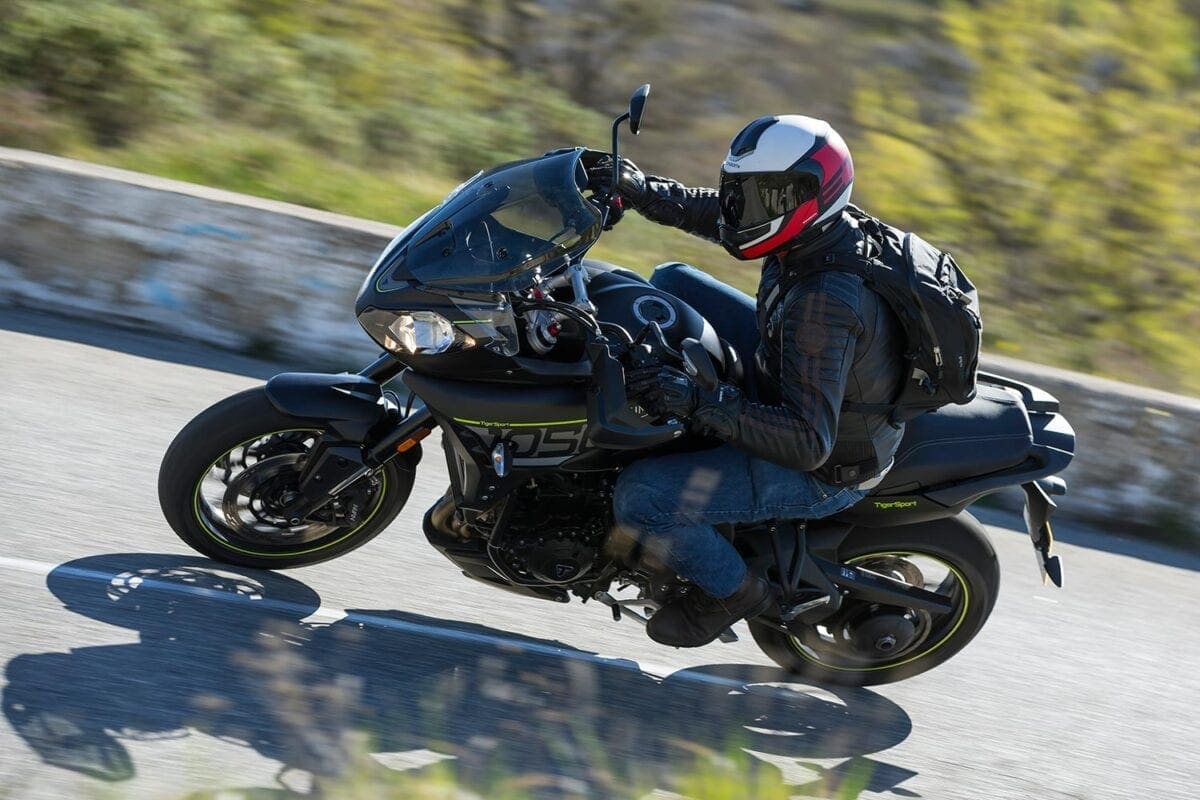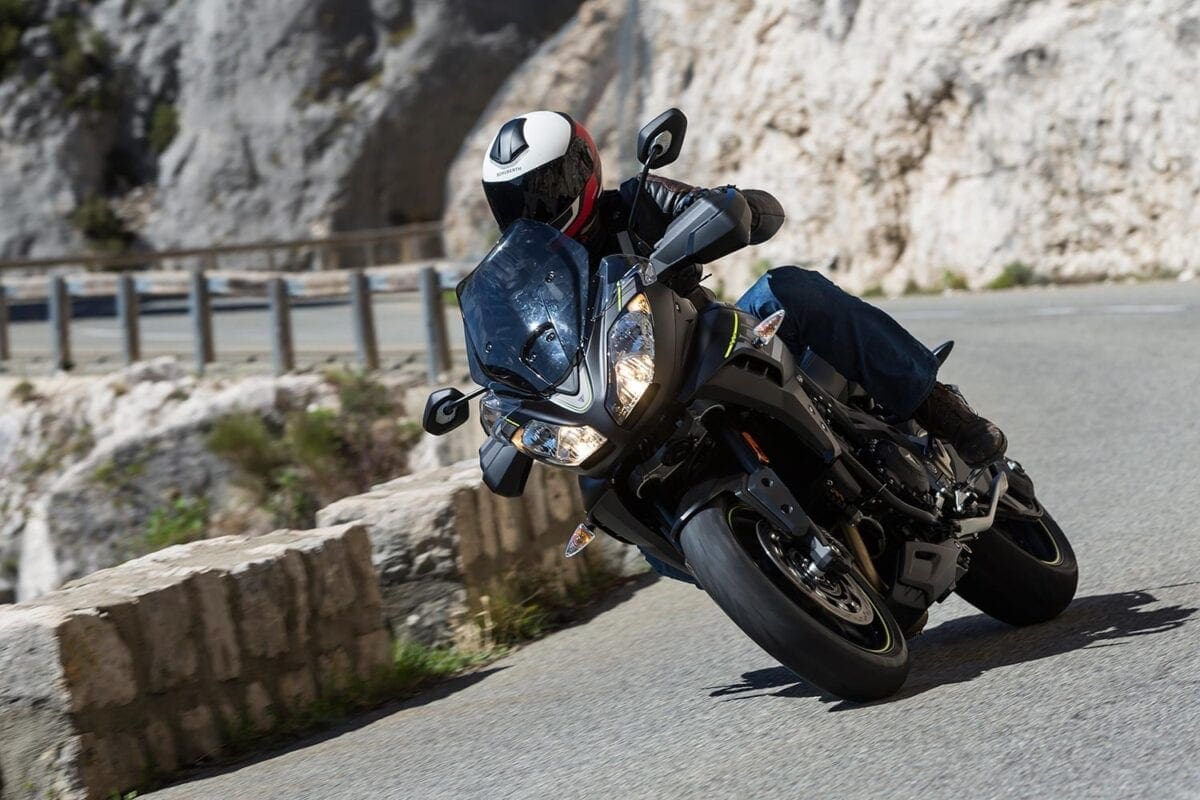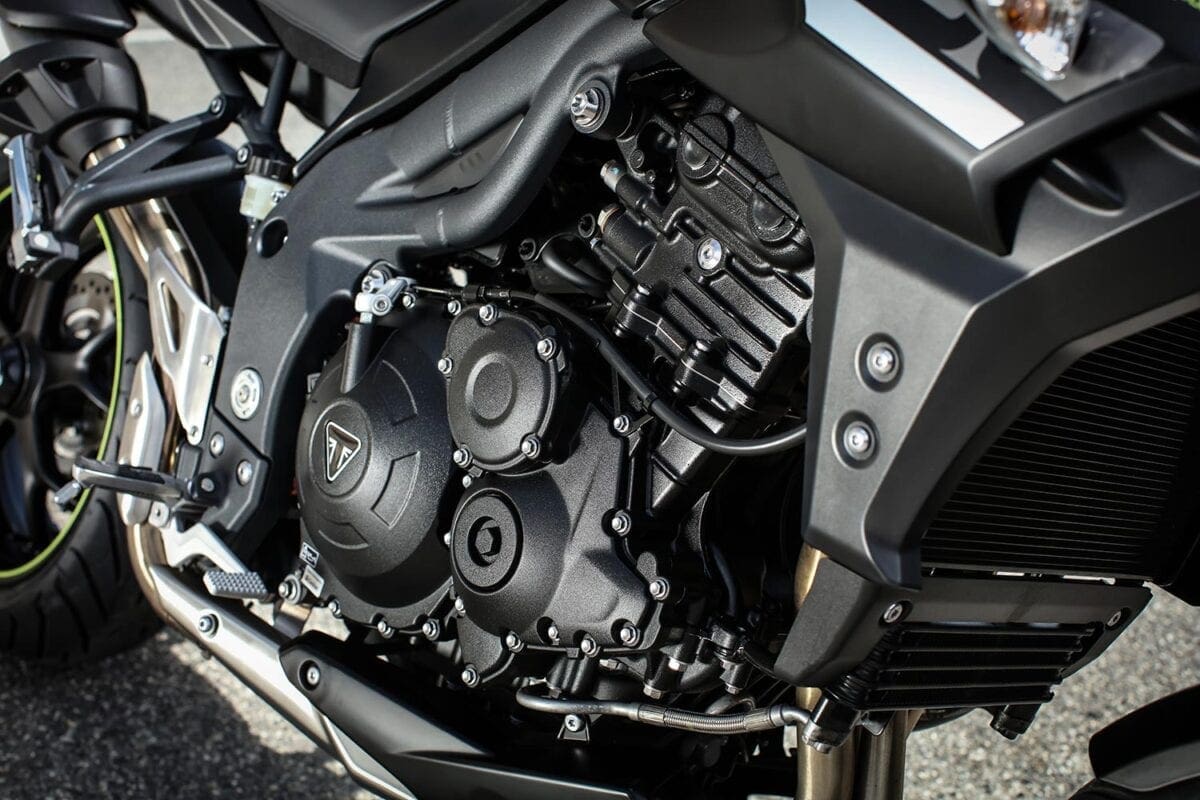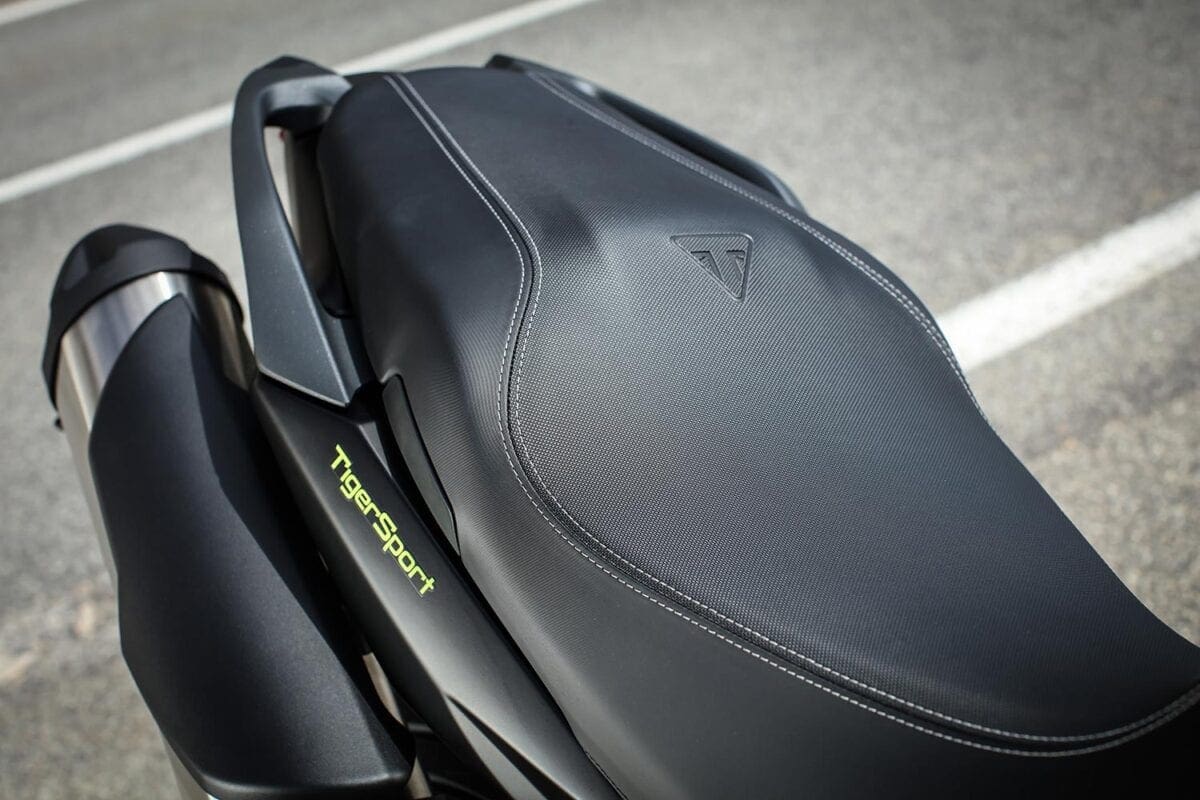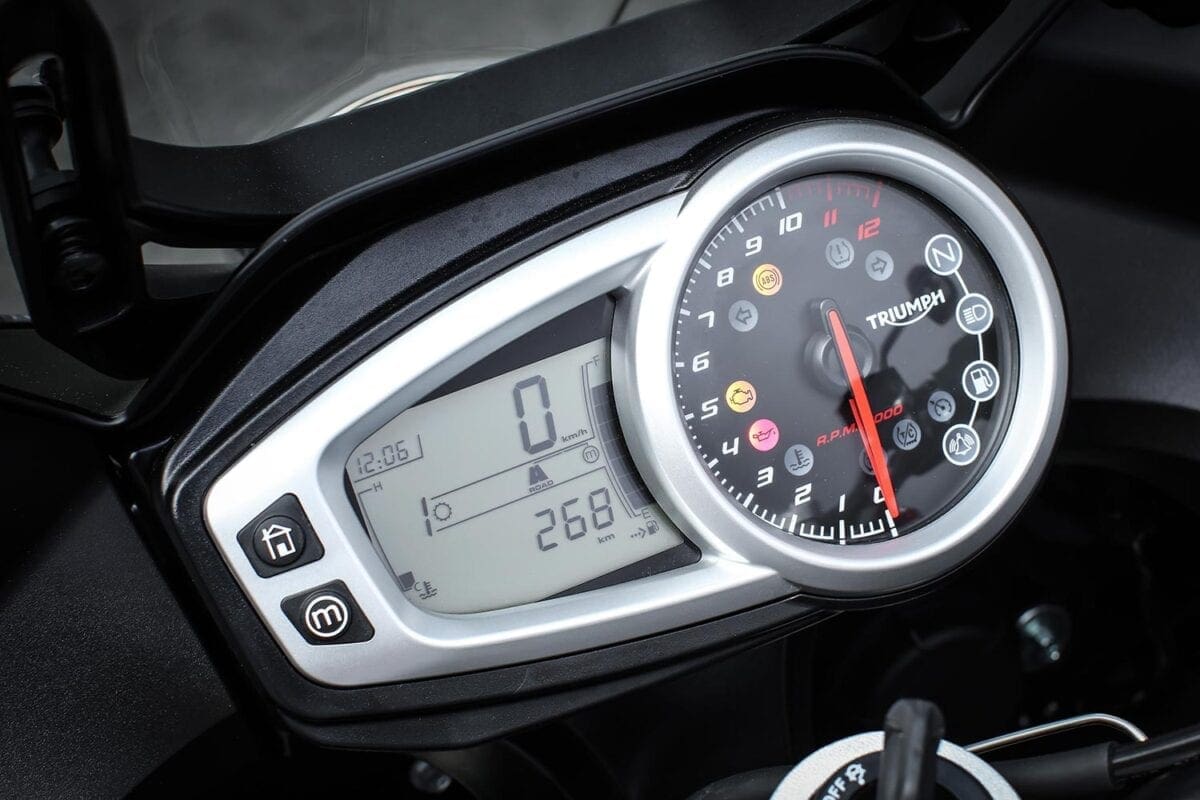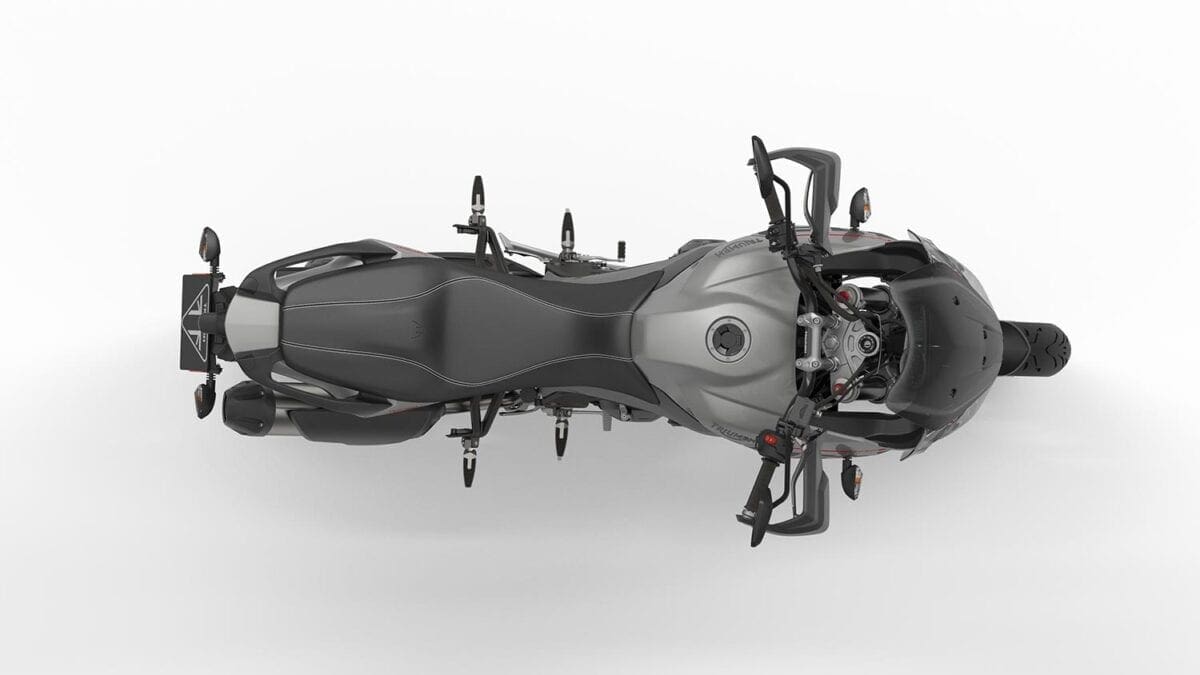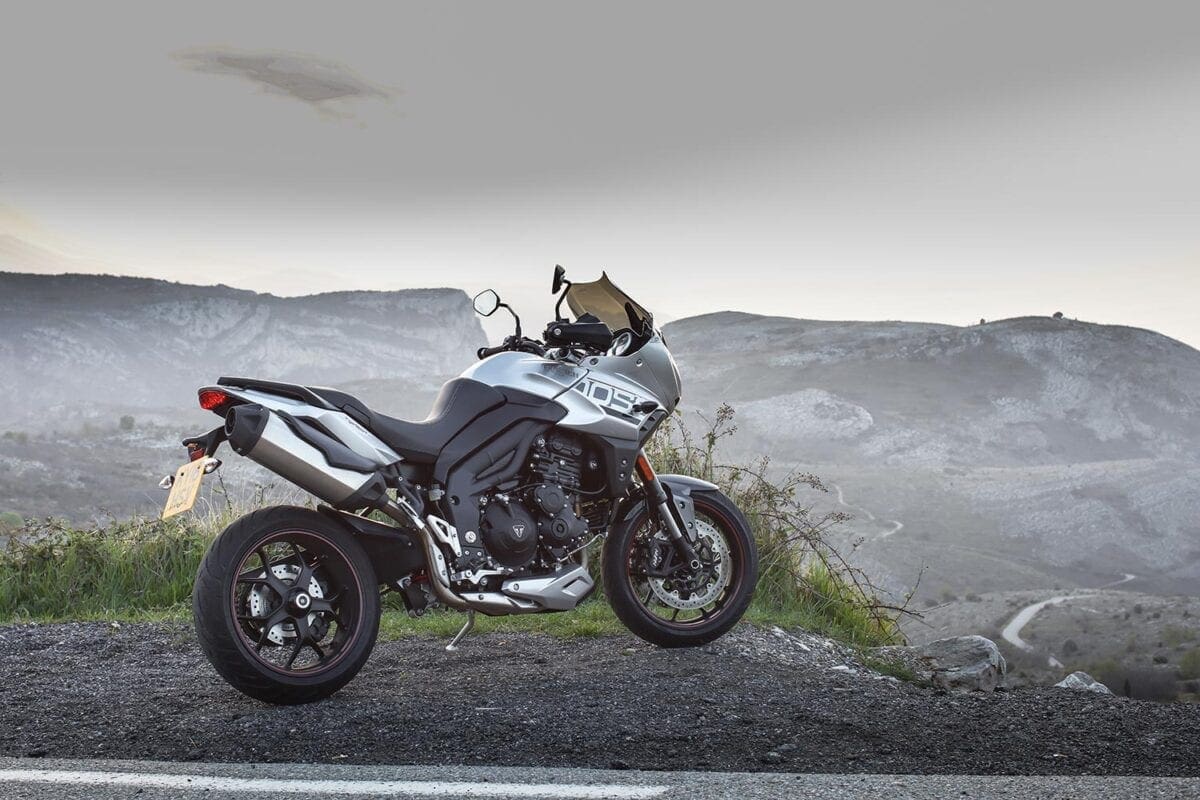WORDS: John Milbank, editor MSL – PHOTOGRAPHY: Allesio Barbanti and Matteo Cavadini
Thank you, Europe. Without your rules and regulations we wouldn’t have some of the world’s best engineers finding the solutions that bring us even greater motorcycles…
The Tiger 1050 was launched in 2007, effectively carving its own niche as a ‘Sports Adventure Bike’. It was for riders who wanted the comfort and practicality of an off-road-capable adventure machine, but with the road manners, performance and lower seat of a sports bike; people who were honest with themselves about where they would be riding. If a tour across Europe is going to take in some light fire roads at most, you don’t really need spoked wheels and long-travel suspension.
In 2013 the machine received a big update, which included revised suspension, a more powerful motor, new ergonomics and style, plus the ‘Sport’ moniker. It became a bike loved dearly by its owners, who – says Triumph – keep their machines longer, use them more frequently, and ride them further than any other motorcycles in the range. It’s also a bike that’s typically the only one in the customer’s garage, so has to be equally capable of touring, commuting and weekend blasts.
For 2016 the 1050cc engine has been updated in line with the Speed Triple: a new cylinder head with revised ports and pistons; Ride By Wire throttle that allows for three riding modes, cruise control and traction control; new fuel injectors, a new ECU and a new alternator, which produces more current throughout the rev-range. The differences between the two bike’s engines are the airbox, exhaust and fuel mapping.
The Tiger’s new silencer is lighter than before, with a 38% improved gas flow, thanks mainly to now having just one chamber instead of three. It certainly sounds good, with a pleasing bark, especially at higher revs, both on and off the bike.
Torque is now 78lb-ft @ 7000rpm, up from 77lb-ft @ 4300rpm. What’s important here though is that low-down torque is very similar, mid-range is improved by 4%, and at the top end the gap continues to widen.
Power is up to 125bhp @ 9475rpm, from 123bhp @ 9400rpm, again with a 4-6% increase in the mid-range. While not mind-blowing figures, meeting Euro 4 and still gaining improvements is commendable, not least with the claimed 8% improvement in economy – measured according to EC regs for specific test conditions (so not real riding), the Tiger Sport’s got a figure of 54mpg. Over our 115mile test in Nice, I saw 42mpg; as always, a launch ride is very stop-start for photos, and involves constant hard acceleration and high speed – a more natural ride should easily see this climbing to 48mpg and beyond, at which point the 20litre tank should give a range of over 210miles.
A decent-sized storage area under the seat will easily swallow a phone, passport, wallet and more, with a convenient USB charging port sharing space with the on-board diagnostics (OBD) connector. A 12V power socket is also located just below the tank on the left of the engine.
Another neat touch is the self-cancelling indicators, which will switch themselves off after eight seconds or 65 metres. Personally, I think that’s too soon, particularly on large roundabouts, but as you can deactivate them in the options menu (rather than have to pay a dealer to turn them on or off as with my KTM 1050), it’s a worthy addition.
Kerb weight is slightly up, at 228kg, but that 2kg gain is unlikely to be noticed.
On the road
With unchanged geometry and suspension, it was no surprise to find that the new Tiger Sport still handled superbly on the tight switchbacks and sweeping bends of our test route. I couldn’t’ help but be impressed by the ability with which the fully-adjustable 43mm Showa upside-down fork and Showa shock remained smooth and compliant, yet hugely forgiving when I found myself barrelling into a corner too quickly – braking on the front even fairly hard, and quite deep into a turn didn’t cause the Triumph to sit up. The rear shock is adjustable for preload and rebound damping, though both are done with a screwdriver, so no skinned knuckles here from an awkward C-spanner.
The Triumph has a very neutral feel to it – easily tipped into corners but more than happy to hold any line. It’s credit to both the development riders and Pirelli, which gives the Tiger its excellent Angel GT rubber.
The three riding modes can be switched on the go – Rain reduces power to 99bhp, and gives a more involved level of traction control. Road is full power, with a smoother delivery, and Sport has the more direct throttle response. Both use a less energetic level of traction control, which in all modes can be switched off, but resets whenever you fire the Tiger up.
To be honest, I felt little difference between Road and Sport, but that’s mainly due to the fact that the fuelling is so wonderfully smooth. It’s easy to roll on and off the throttle without ever getting that choppy feeling of some more aggressive adventure bikes; pillions should love the Tiger. Changing modes requires reaching across the bars to the clocks, then closing the throttle and pulling in the clutch. It’s a little clumsy, but you’re unlikely to be switching between them that often. The rest of the switchgear is well placed, though practice will be required to navigate successfully through the well-specified clocks, which hide two trip meters, clock, average speed, journey distance and time, average and live fuel consumption, fuel gauge and range to empty. The digital speedo sits next to a large analogue rev-counter, which also carries a comprehensive array of warning lights.
The Triumph is plenty fast enough, but that smooth throttle does come at the cost of a little punch out of second and third gear corners. It’s down to riding style, and discussing it over dinner with another journalist, we agreed that the engine and package is superb, but my slow-in, hard-out riding style seemed to have me noticing the slight lull more than his smoother (and frankly better) style. Winding the throttle on in a corner gave a slight impression of the bike holding back a little, lacking the kick up the rear that bikes like the KTM 1190 – or even 1050 – Adventure give. You don’t notice it all the time, and certainly not out of tight hairpins in first gear… but if it’s the price to pay for such sublime handling and comfort, then it’s unlikely there’ll be any complaints.
I didn’t find the traction control in any way intrusive – the warning light would flash occasionally when clipping bumps in first or second at wide throttle openings, but I didn’t feel it intervene. Right at the end of the test though I rode over something very slippery as I exited a roundabout – maybe it was the silly paint the French seem so intent on using for crossings, but it wasn’t wet so it could have been some oil. Whatever it was, the back kicked very quickly out of line, before snapping back in place. As it was up hill, and I didn’t notice any drop in speed, it seems likely the bike’s brains caught me before I could shut the throttle.
Triumph says the gear change engagement has been improved, and while I could find no other journalists on the launch that complained, I thought my bike occasionally felt a little heavy to select. These were box-fresh machines though, so it’s likely it would loosen off, and my thin-topped boots didn’t help. I wasn’t the only one to occasionally drop into neutral when switching up or down between first and second – a positive selection seemed important.
More comfort
The torque-assist clutch allows for lighter springs to be used, and the span-adjustable cable-operated lever, connected to a new forged lifter arm, is very light – Triumph says it reduces lever effort by up to 48%. It’s just another thing that adds to the comfort of a bike that, over our entire route, gave me no discomfort whatsoever. At 5’11”, the 830mm-high saddle allowed me to comfortably get both feet on the ground (which made moving it around gravelly lay-bys very confidence-inspiring), yet provide a roomy seating position with no aching whatsoever in my behind. One journalist, at 6’5”, also said he found the bike comfortable, as did another at 5’7”, though he could only get one foot on the floor (a lower seat is available as an option).
The new screen, which is adjustable on the move with one hand, is matched to a pair of deflectors on either side that do appear to work well. We didn’t have the opportunity to ride any motorways, but on the longer straights where speeds really grew I didn’t suffer any unusual noise or buffeting. Set at its highest, it didn’t take much for me to crouch down a little, eyes still above the screen, and be in a bubble of still air. New hand-guards are also a welcome addition, very effectively protecting your hands, and a great compliment to the optional heated grips, which are internally wired and of a slim design, so should look great as what will doubtless be one of the most popular additions.
Full luggage is of course available, and owners of the current model will no doubt be pleased to hear that, although the panniers and top-box have been updated, the previous kit will still fit the new bike.
But should those riding the 2013 model rush to the dealer to update? At £10,300, 2016 sees a £401 price increase – those who bought last year shouldn’t be kicking themselves for not waiting, but the improved weather protection and traction control certainly justify the price hike. If owners really are as passionate about their bikes as Triumph says, it may be a while before bikes that are just three years-old get traded in for the newer model. It’d be no surprise though to see many PCP deals drawing to a close, and buyers switching straight to the newer model.
Triumph has had a spectacular year – this was the last of the launches from the Hinckley manufacturer, and the Tiger Sport will likely be overshadowed by the excitement surrounding the awesome Thruxton R, the stunning T120 and the ever-popular Explorer range. But as a perfectly-considered sports bike with serious touring capabilities, the Tiger Sport is an absolutely brilliant motorcycle, and should be on the test-ride list of every potential adventure bike, sportsbike, touring and commuter buyer.
To read much more about this bike, and for the very best in-depth reviews, features, touring and adventure, buy Motorcycle Sport & Leisure magazine. Order a copy HERE.
Specifications 2016 Triumph Tiger Sport
Price: £10,300
Engine: 1050cc liquid-cooled 12-valve DOHC triple
Power: 125bhp (93kW) @ 9475rpm
Torque: 78lb-ft (106Nm) @ 7000rpm
Transmission: Six speed, chain final-drive
Chassis: Aluminium beam twin-spar with single-sided aluminium swingarm
Suspension: (F) Showa 43mm upside-down fork, fully adjustable; (R) Showa monoshock adjustable for preload and rebound damping
Brakes: ABS (F): 2x 320mm floating discs with four-piston Nissin calipers; (R) Single 255mm disc with two-piston Nissin caliper
Tyres: Pirelli Angel GT (F) 120/70 ZR17; (R) 180/55 ZR17
Seat height: 830mm
Kerb weight: 228kg
Tank capacity: 20litres
Economy: 54mpg (claimed), 42mpg (tested)
Contact: www.triumphmotorcycles.co.uk

